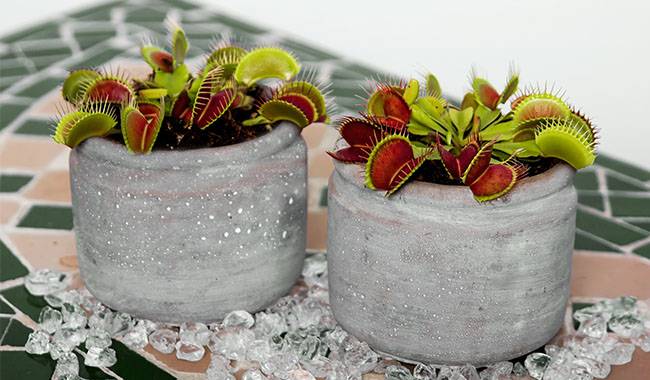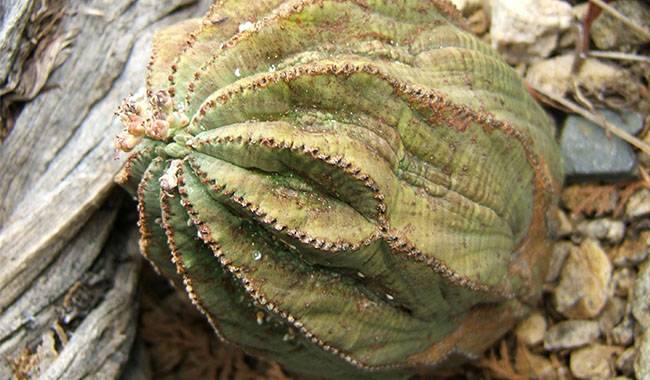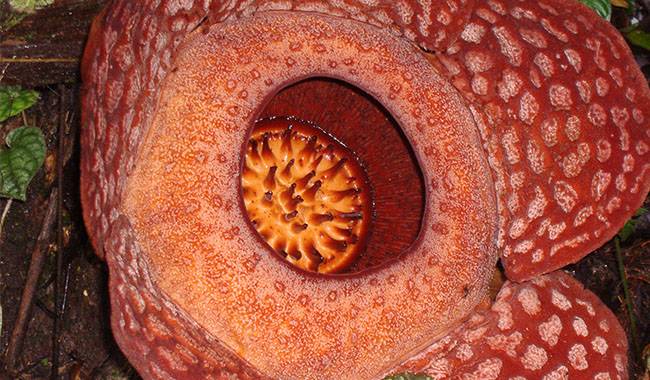What is the Venus Flytrap
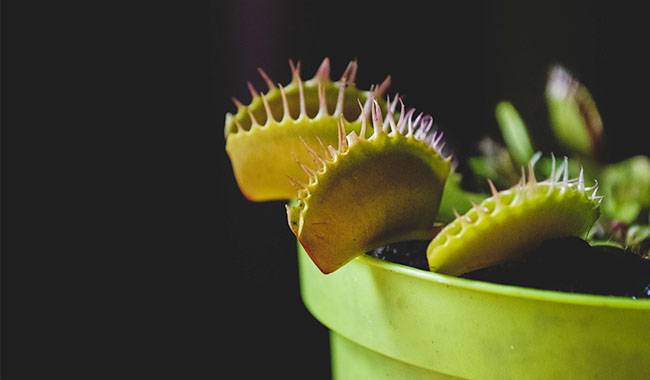
Venus flytrap(Dionaea muscipula), a perennial herb native to North America, is a very interesting insectivorous plant.
Its stem is very short, and there is an insect trap resembling a “shell” on the top of the leaf, and it can secrete honey. When a small insect breaks in, it can be clamped at a very fast speed and digested and absorbed.
Because there are regular bristles on the edge of the leaves, it feels like Venus’ eyelashes, meaning “Venus’ flytrap.”
Its main feature is that it can quickly close the leaves to prey on insects. It is a carnivorous plant like its distant relative Nepenthes. It is the only one in the Drosera family Venus flytrap and belongs to a type of vascular plant.
Potted plants are placed on the balcony for viewing, and can also be cultivated in a planting trough; the Venus flytrap is known as a carnivorous plant in nature. Venus flytrap’s unique insect catching ability and cool appearance make it the most favored carnivorous plant in the world.
Morphological characteristics of Venus flytrap
Venus flytrap is a kind of vascular plant. It is a very popular carnivorous plant with intact roots, stems, leaves, flowers, and seeds.
Its leaves are the most important and obvious part, which has the function of predating insects. The obvious bristles and red sessile gland parts look like a big mouth with teeth and claws.
Venus flytrap only exists in the coastal plains of southeastern South Carolina and the northeast corner of North Carolina.
However, the existence of the Venus flytrap in its place of origin is threatened by human activities. The rapid increase in population deprived the Venus flytrap of living space, and because of human intervention in the occurrence of natural wildfires, some small shrubs began to grow in these areas, thus shielding the Venus flytrap from sunlight.
Therefore, Venus flytrap was tried to be introduced into other areas for rehabilitation, such as New Jersey and California. Has been naturalized smoothly in Florida and has become a large ethnic group.
Venus flytrap leaves
The central part grows out, which belong to whorled leaves, which grow in clusters in a remarkably seated shape.
The petiole is the part that grows out of a flat or thin line that looks like a wing in the center. The petiole of the native species is flat like a leaf, but because it looks like a leaf, it is also called a false leaf.
There is an insect trap at the end of the petiole. This is the part of the leaf that catches insects. There are many sessile glands on the front, usually red or orange. The closer the leaf is to the green, the fewer sessile glands. The part is the part that secretes digestive juice to break down insects or absorb nutrients from insects.
Chlorophyll has tooth-like bristles, and the base of the bristles has secretory glands, which secrete mucus, which prevents insects from breaking away and sticking to the leaf petals. This kind of leaf has the special function of catching insects and has a special appearance plant, which belongs to the “insect catching leaf” among the abnormal leaves.
Because the new leaves are produced from the center, the outer leaves are older. Sometimes new lateral buds are formed at the base of the outermost petiole. There are two types of petioles of Venus flytrap. Some Venus flytrap petioles are slender, up to 7-16 cm long, and stretch toward the air; some Venus flytraps grow short and fat.
The petioles are laid flat on the ground. The inside of the insect trap usually shows red color. These colors are mostly the pigments of the digestive glands. When the plant can receive sufficient sunlight, it will promote the production of plant pigments. These colors range from orange-red to red-purple, and some are artificial. Venus flytrap even produces pigment outside the digestive glands, which makes the whole plant red.
Venus flytrap petals
The flowering period of Venus Flytrap is from early summer to midsummer. In the early stage, flower stems will grow. Each flower stem has about five to ten flower buds. It is a standard corymb inflorescence, and white flowers bloom sequentially every day.
In principle, each flower will only produce one flower stem. If the growing environment is suitable and the nutrients are sufficient, sometimes two flower stems will grow. Normally, there will be five petals and five calyxes, and occasionally six petals. The variant strain.
There are about a dozen stamens and a pistol in the center with a bifurcated stigma.
Venus flytrap pollination is relatively rare on the same plant. The reason is that when the anther of the stamen grows pollen, the style of the pistil is closed.
When the stamens begin to pour outward, the stigma will open and become bifurcated, and then it will be in a state of possible pollination.
This kind of stamens mature before the pistils grow into it is quite common in the plant kingdom. The main thing is to avoid pollination of the same plant.
Generally speaking, this kind of flower is called a “Protandrous flower” (Protandrous flower). Except for the flower stem, there is generally no taller part that grows upward. The normal stem is short and difficult to detect, and the petiole and leaves will not rise above the flower stem.
This is a characteristic of carnivorous plants. Because in addition to predating insects to absorb their nutrients, insects are also needed to assist in pollination for the continuation of offspring, which is an entomophilous flower.
Therefore, the supplementary leaves and flowers must be distinguished. It can be said that this is the natural wisdom given to them by nature.
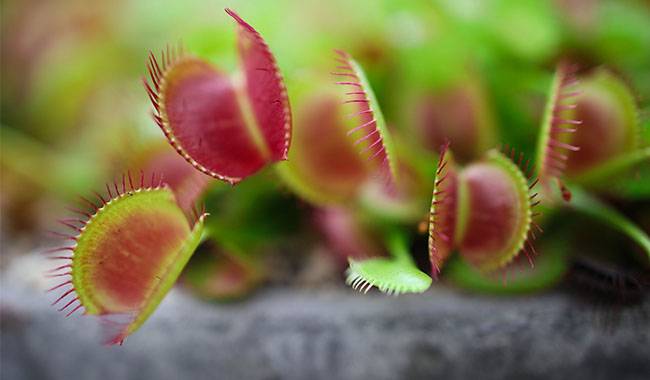
The growth environment of Venus flytrap
The native place of Venus flytrap is grassland on the wetland, and the soil in this area is mostly peat and silica sand.
Most of its water source is rainwater. Because rainwater merges with carbon dioxide and falls to the earth through the atmosphere, it creates an acidic environment with a pH of about 5-6.
It can be seen that Venus flytrap prefers places where water is sufficient and an acidic environment is a medium.
The acidic soil and low temperature hinder the growth of bacteria that decompose organic matter.
However, if the organic matter is not decomposed, the remains of plants such as sphagnum moss cannot be completely decomposed and decompose. This decaying organic matter will turn into peat and lack nutrients.
Coupled with being washed away by rain over the years, all trace elements have also been lost. Therefore, the native land of Venus flytrap is a barren land that lacks the essential nutrients for growth, nitrogen and phosphoric acid, as well as trace elements.
Venus flytrap is a perennial herb. After the seeds have germinated, they will reach maturity after 4 to 5 years, and then they will bloom and bear fruit.
With good care, the Venus flytrap can live at least 20-30 years.
Venus flytrap begins to bloom shortly after new leaves are grown in spring, and it will grow up to 15
There are about 10 flower buds at the top of the flower stem of 25 cm. A flower blooms every other day, the flower color is white.
A flower can bloom for a few days before pollination, but if the pollination is successful, the flower will die the next day, then the ovary will gradually expand, and the fruit will mature in about a few weeks. The mature fruit contains dozens of black, drop-shaped seeds.
After the flowers bloom, it is also summer. Venus flytrap will continue to grow more leaves and grow bigger insect traps. This is the season when Venus flytrap needs a lot of predation to store nutrients for the next For flowering of the year.
The fruits that are set at the end of spring will mature in summer, and the bursting seeds will germinate over a period of time. The young Venus flytrap first grows false leaves, and then the first cotyledons with complete insect traps will grow, and they will begin to catch insects.
The leaf lifespan of Venus flytrap is about several months (2 to 3 months) in autumn, but only a few weeks in summer. Old leaves will gradually turn yellow, lose their ability to catch insects, and finally turn black and die, but new leaves will still Continue to grow from the center;
Throughout the summer, the Venus flytrap will continue to grow new leaves, and until autumn, another slow-growing leaf will grow. At this time, the leaves grown in summer are so big that they wither, and the Venus flytrap is ready to pass the winter.
In winter, some small insect traps will still remain, but they have lost their ability to catch insects and are almost not used. When the climate is too cold, the leaves on the ground will wither.
The predator structure of the Venus flytrap is a clip formed by a symmetrical blade on the left and the right. This clip-like structure is specialized from the leaf, and the leaf-like structure connecting the insect trap is the petiole.
The outer edge of the trap is lined with spiny hairs. These hairs are soft and can be used to prevent caught insects from escaping. When the insect traps catch the insects, the hairs on the ends of these clamps are staggered and become a cage, preventing the insects from escaping.
The inside of the trap is red and it is covered with many tiny red dots. These red dots are the digestive glands of the Venus flytrap.
Three pairs of fine hairs can be seen on the inside of the trap. These fine hairs are the sensory hairs of the Venus flytrap, which are used to detect whether the insects have reached a suitable position for catching.
Most insect traps only have five pairs of sensory hairs, but traps with one or more sensory hairs may be produced.
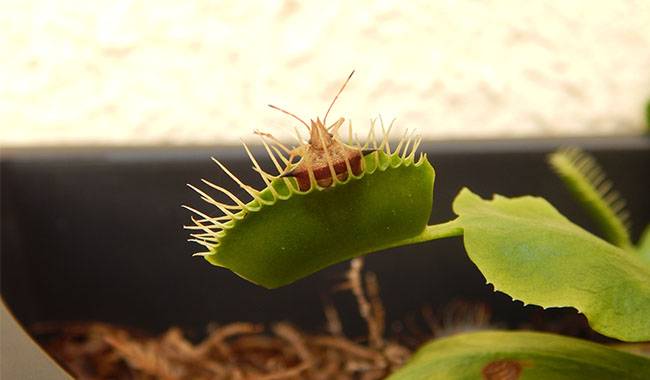
The growing area of Venus flytrap
Venus flytrap only exists in the coastal plains of southeastern South Carolina and the northeast corner of North Carolina.
In the state of origin, Carolina, Venus flytrap grows in wet sandy or peat wetlands or marshes. These areas usually take the form of grasslands with only scattered pine trees, so they are very open and can receive a lot of sunlight.
The climate here is warm and humid. In summer, it is hot during the day and can be kept warm at night. In winter, it is very cold, but it is not so cold that it often snows.
However, the existence of the Venus flytrap in its place of origin is threatened by human activities.
The rapid increase in population deprived the Venus flytrap of living space, and because of human intervention in the occurrence of natural wildfires, some small shrubs began to grow in these areas, thus shielding the Venus flytrap from sunlight.
Therefore, Venus flytrap was tried to be introduced into other areas for rehabilitation, such as New Jersey and California. However, it has been naturalized smoothly in Florida and has become a large ethnic group.
Venus flytrap is native to the east coast of North America. The natural growth areas are mainly in North Carolina, South Carolina, and Florida. The characteristics of the growth environment prefer wet areas.
There are many places in the area that belong to alluvial terrain, and the weather is hot in summer, cold in winter, and the temperature difference between day and night is large. It belongs to a typical continental climate. These are environmental conditions suitable for the growth of Venus flytrap.
The United States has designated its native areas as protected areas, and even in Appendix II of the Convention on International Trade in Endangered Species of Wild Fauna and Flora, there is a total ban on the export of “Venus flytrap tubers and bulbs”.
However, since many strains have flowed out before then, they have been actively cultivated by industry players all over the world, and even mass-produced using tissue culture techniques, so Venus flytrap is generally easily available on the market.
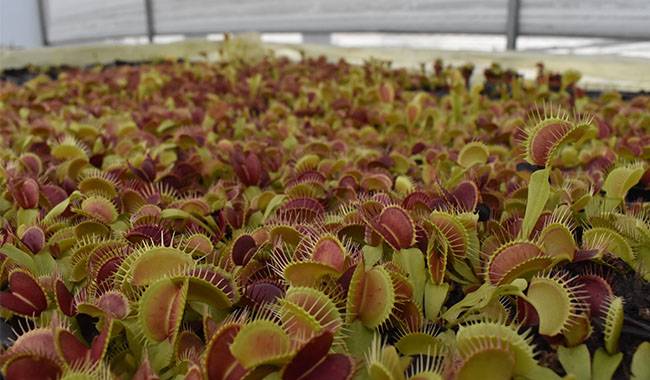
Venus flytrap’s predation method
Secreting nectaries
The habits of carnivorous plants are roughly divided into the following four steps:
1 Attract insects → 2 catch insects → 3 digestive it to decompose and absorb → 4 absorbed nutrients to maintain growth.
However, not all carnivorous plants go through such a complete process. For example, some plants of the same type do not secrete digestive juices but are decomposed by various microorganisms to absorb nutrients.
The Venus flytrap is a relatively advanced carnivorous plant with a fairly complete process in this part.
The edge of the leaf of Venus flytrap contains nectaries, which secrete nectar to attract insects to approach.
When the insect enters the leaf surface, it touches the sensory hairs belonging to the sensory organ twice, and the two-petal leaves will quickly come together.
The bristles growing on the leaf margin are multicellular protrusions and have no bending function.
When the leaves are closed quickly to clamp the insects, the bristles will interlock and bite each other closely, the purpose of which is to prevent the insects from escaping.
Pass the signal
The signal for catching insects is not directly provided by sensory hair. There is an enlarged part at the base of the sensory hair, which contains a group of sensory cells.
The function of the sensory hair is like a lever. The insect pushes the sensory hair so that the sensory hair presses on the sensory cell and the sensory cell sends out a weak current to notify all the cells on the insect trap.
Since the current will disperse to the entire insect trap, it is not necessary to touch the same sensory hair to initiate the closure. As long as any two sensor hairs in the same insect trap emit a current, the closing movement can be triggered.
Of course, the electric current sent by the felt hair only affects the insect trap where it is located, and will not interfere with the operation of other insect traps on the same plant.
Before being stimulated, the insect trap was opened at an angle of 60 degrees. When stimulated by insects, the insect trap was closed with its veins as the axis.
The closing of the trap is related to the shrinkage of the cells on the trap.
When the cells on the insect trap receive the electric current from the sensory cells, the cell vacuole inside it quickly loses water and shrinks, causing the insect trap to bend inward, thus closing.
Closing the insect trap
The closing of the trap is a precise control process. This process begins when the insect touches the sensory hairs on the clamp.
The condition that causes closure is that in an insect trap, any one of the sensory hairs is touched twice, or two sensory hairs are touched separately.
The time interval of touching the felt hair has a decisive influence on the closure: if the interval between two touches is within 20-30 seconds, it can be closed, and after this time, the third successful stimulation is required to close.
The insect trap requires two stimulations to confirm that the insect has reached the proper position.
When the insect trap is stimulated for the first time, the insects just walk into the trap slightly;
If the insect trap is closed, only a part of the insect is caught, then the insect has a great chance of being able to escape.
When the insect trap is stimulated for the second time, the insects are almost inside the trap at this time, and the closed insect trap can firmly catch the insects and close it in the trap.
The closing process is divided into two stages.
The first stage: the clip is quickly closed to catch the insects. At this time, the insect clip only catches the insects;
The second stage: the insect trap is retracted inward so that the inner side of the insect trap can be as close to the insects as possible. At this time, the insect trap has been completely closed, leaving no gap.
Digestion and absorption
The clamp is closed for several to ten days, at which time the insects are digested by the digestive juice secreted by the glands distributed on the insect trap.
After the insects are digested, the insect trap will be opened again, waiting for the next prey. The remaining insect shells that cannot be digested are taken away by wind and rain.
The second stage requires the struggle of insects to proceed because it means that the insects caught by the insect trap are indeed insects and live prey.
Venus flytrap sometimes catches dead branches and fallen leaves by mistake. Without this confirmation mechanism, nutrients will inevitably be wasted on indigestible debris.
If the insect trap catches debris by mistake, as long as there is no continuous stimulation, it will reopen the insect trap after a few hours and wait for the next prey.
When the trapped insect is clamped by the two leaf flaps and cannot break free, the leaf will be clamped tighter and tighter in the process of the insect’s struggle until it is almost closed. At this time, the dense internal glands inside the two leaf flaps will secrete and digest Liquid, using the protease contained in these digestive juices, decomposes insect proteins into nitrogen, oxygen, carbon, hydrogen, and possibly other elements composed of amino acids for absorption.
Generally, it can be decomposed in about four days and absorb the more digestible parts, and then continue to absorb the remaining nitrogen, phosphorus, and other required trace elements.
After all these nutrients have been absorbed, the leaf flaps will open again, and the whole time will take about 5-10 days. At this time, the insects are left with empty shells composed of chitin.
However, the Venus flytrap cannot distinguish the size of the catch, and sometimes it may catch the size of the leaf, such as a small frog or a long-legged bee.
At this time, it will often cause too late to decompose and absorb, and the harvest itself will decay first, so the leaves will appear to wither like food poisoning.
In addition, each leaf can be caught 12-18 times and digested 3-4 times. Beyond this number of times, the leaves will lose their ability to catch insects, make their due contribution to the final photosynthesis, and then gradually wither.
Catching speed
When the insect picks nectar for the first time, the leaves will not move when they touch the felt hairs, but if they are stimulated twice in a row, the leaves will immediately close together within about 0.5 seconds on average (but some artificial gardening varieties cannot This speed).
If the difference between the time of the second touch and the time of the first touch exceeds about 20 seconds, the blade will become semi-closed or unresponsive. If it is stimulated for a third time immediately at this time, the leaves will quickly close together.
After experimental investigation, the sensory hair of the Venus flytrap is like a sensing device. When stimulated by two consecutive touches, the base of the leaf will generate an action potential of about 100 millivolts (mV) on the leaf surface. As a result, the water inside the leaves is quickly lost, causing the internal and external pressures to be unequal, so the leaves are closed.
This kind of insect trapping mechanism is a set of very sophisticated structure, and the stimulus feels like a timing device is set, and will not close until the second confirmation. The main reason is to improve the accuracy of trapping, otherwise, it will be like raindrops. , When the animal passes by, it will reduce and affect its efficiency of catching insects.
It has been confirmed by plant researchers that the mechanism of the Venus flytrap will emit activity potentials, just like animal nerve tissue will produce transmission information.
But because this has to be touched twice in a row, there should be a memorable organization. Plant researchers still don’t know how much memory works in Venus flytrap, which is an unsolved mystery.
Carnivorous plants set up a puzzle, and then start killing. The tiny fluff of the Venus flytrap was touched twice, and then suddenly closed with a pop.
The reproduction method of Venus flytrap
Sexual reproduction
Venus flytrap reproduces through seeds and belongs to seed plants. Venus flytrap can self-pollinate, but it usually requires artificial pollination to actually produce results.
However, the artificial pollination of the Venus flytrap is not necessarily successful, because the timing of pollination is wrong.
When the flowers of Venus flytrap bloom, the female and stamens do not mature at the same time. When the flower just opens, its stamens are already mature, but the pistils are immature, and it is useless to pollinate it.
The pistil of Venus flytrap usually matures a day later than the stamen, so the correct way is to wait for the second day after the flower blooms before pollinating. We can also observe the shape of the pistil to determine whether it is mature.
The stigma at the end of the immature pistil is round, and the stigma at the end of the mature pistil will split like a flocculent; only mature pistils can successfully pollinate.
If the pollination is successful, the flowers will wither within 1 to 2 days, and the ovary (the base of the pistil) will expand, and the fruit will mature in a few weeks.
The seeds of Venus flytrap are black and drop-shaped; a fruit usually contains a dozen seeds.
The number of seeds is related to the health and size of the plant itself. A strong plant usually bears a little more seeds.
Sometimes the pollination method is correct, but the seeds still cannot bear it. The biggest problem is that the Venus flytrap is not strong enough, or the Venus flytrap is not continuously given enough light during flowering. At this time, even if the pollination is successful, it is difficult to bear seeds.
Venus flytrap seeds are less resistant to the preservation, so try to sow them as soon as possible after harvest.
Sometimes, if you want to pollinate different plants, but the plants you want to cross do not bloom at the same time, you can first collect the pollen and store it in the refrigerator to extend the life of the pollen.
Since flowering is a nutrient-consuming activity for plants, if it is not necessary, do not allow Venus flytrap to bloom, especially when you want to plant a large Venus flytrap, cut off the stems as soon as possible to prevent Venus flytrap consumes nutrients for flowering.
Since the Venus flytrap will bloom when the season arrives, some weak plants will barely bloom, but in order to protect the plants, cut off the flower stems.
Insert leaf method
The commonly used propagation method of Venus flytrap is the leaf-cutting method, that is, inserting a section of petiole into the soil to grow new plants.
In the late spring to early summer, Venus flytrap grows vigorously. After the Venus flytrap is dug out from the soil, we can see its white petal-like petioles buried in the soil.
Peel off the petiole (like the part of the leaf) of the Venus flytrap insect trap, together with the white petiole base, and place these petioles on the cultivation medium to maintain high humidity and give bright light. After a few weeks, it will be New shoots are emerging.
The process of bud formation is very slow, so be patient and wait. As long as the base of the petiole does not turn black or rot, wait forever.
Since the petiole at this stage has no roots, it is important to maintain the humidity. The moist cultivation medium can be attached to the petiole to provide moisture;
The light intensity at this time is also very important. Bright and sufficient light is required, but not direct sunlight, otherwise, the petiole will be too hot and dry.
The age of the petiole is also related to the success rate of reproduction. Usually, the petiole in the prime of life is larger and has the greatest chance of producing seedlings; old leaves and young leaves are less likely to produce new buds.
Therefore, when breeding, we can use a circle of petioles on the periphery of the Venus flytrap, and plant the remaining center; if the petioles can have roots, the chance of success will be higher.
In order to reduce the damage to the petiole, the use of a clean cultivation medium will not make the petiole rot. Therefore, it is recommended to use sphagnum moss as the cultivation medium for leaf inserts. When the seedlings grow out, consider transplanting them to other places.
Branching method
Venus flytrap often grows lateral buds. As long as the lateral buds are large enough and have complete roots, they can be separated from the mother plant and cultivated separately (but some artificially cultivated species rarely have ramets throughout the year).
Flower bud method
The flower buds of Venus flytrap sometimes become a plant! It is known that this phenomenon is caused by temperature differences.
If the temperature difference between day and night is very large, it will induce the flower buds of the Venus flytrap to transform into new plants. At this time, this small plant can be cut and planted in the soil, and it will be a new Venus flytrap.
Variation of Venus flytrap
In the native place, Venus flytrap has only one native species and several variants, and their appearance is relatively simple.
However, in the process of reproducing Venus flytrap by tissue culture or seeding, a very small number of Venus flytraps will mutate, causing some of their shapes to be different from before the mutation when these mutated characteristics are stable in the next generation;
It can be called a new breed, and many variant breeds are also one of the biggest pursuits of players who like Venus flytrap.
There are more than 600 horticultural varieties of Venus flytrap, most of which are variant varieties that emerged from tissue culture;
In addition, there are many hybrid varieties, and at the same time, plants that germinate from seeds may also mutate.
Introduce several well-known varieties
The Baron Venus flytrap
The Baron Venus flytrap (Dionaea “Wacky Traps” or Dionaea “Bart Simpson”)
It is a breed that has undergone severe mutation, and there are very few breeds that have so many characteristics different from the typical Venus flytrap. The petiole section of the Baron Venus flytrap is round and irregularly raised, and it grows on the ground almost all year round. The fleshy clip is one of the thickest varieties of all Venus flytraps. Almost all the parts above the cirrus of the clip are incomplete, with irregular edges. Triangular, the more the light is, the more obvious the defect is, the clip can hardly be closed, and the ability to catch insects is basically lost, and the inner side will be bright red. The Baron Venus flytrap is not only incomplete, but the stigma on its flowers is also underdeveloped and cannot be pollinated normally, so it cannot produce seeds and can only be reproduced by asexual reproduction methods such as leaf cuttings. The growth is relatively slow, and the maximum size that the clip can grow to is generally only about two centimeters.
Toothed Venus flytrap
Toothed Venus flytrap (Dionaea “Hamihaton”)
Its plant is more robust. The biggest difference is that its teeth are triangular, which is different from the slender type of the typical Venus flytrap. It may be the earliest variant of Venus flytrap. It was collected in the wild in the 1970s and is the only one. The other is the Dutch Venus flytrap (Dionaea Holland Red). The plant of the Dutch Venus flytrap can show a bright red color. In 1970, the Dutch gardener selected it from 1,000 wild Venus flytrap. Both Venus flytraps were later bred in large numbers and widely cultivated.
B52Venus flytrap
B52Venus flytrap (Dionaea “B52”)
The appearance of the B52Venus flytrap is not much different from the typical Venus flytrap, but its growth rate is obviously stronger than that of other Venus flytraps. The leaves are also very strong. The insect trap can grow up to 5.7 cm. It is the largest and the most One of the well-known Venus flytrap varieties. “B52” refers to a large American military bomber. The B52 is used as a metaphor for its powerful insect trapping power.
Dionaea muscipula Typical
Dionaea muscipula Typical
Dionaea muscipula Typical is a very typical Venus flytrap variety. It is the most common and low-priced Venus flytrap variety in Global. It is also the one that has been cultivated for the longest time in Global. Perhaps it is because of the continuous artificial asexual reproduction that its growth is not as good as other varieties. Venus flytrap is vigorous, the number of leaves is relatively small, the largest clip is generally only about 2.5 cm, and its pedigree has not been verified. It is not the wild original species of Venus flytrap, but its low cost and price are the promotion of insectivorous plants in Global. Plays a huge role.
Cup clamp Venus flytrap
Cup clamp Venus flytrap (Dionaea muscipula Cupped Trap=Cup Trap)
It is a very classic advanced Venus flytrap variety. Its insect-catching leaves are cup-shaped with obvious characteristics. The price was high at the beginning, but with the development and promotion of tissue culture technology, the price also dropped.
Alien Venus flytrap
Alien Venus flytrap (Dionaea muscipula Alien)
It was discovered by Frenchman Guillaume Bily at the Open House event held in May 2008 at the Carniflora Nursery. He also discovered the shell Venus flytrap (Coquillage) on the same day.
Carnivora is a carnivorous plant nursery in the Netherlands. Guillaume really picked up a treasure, and he did not let him go all the way to the Netherlands.
According to the ICPS information, Guillaume described the following: “The biggest feature of the alien is the extremely curved shape of the back of all the clips, which can easily grow 4-5cm clips on mature plants.
The shape of the clip is easily reminiscent of the monster in the movie “Alien”. A mature clip has teeth shorter than a flower market catcher. There are small tooth wings (like small wings) at the end of the clip-on on both sides, and there will be teeth adhesion at the base.
There are more cilia on the inside of the clip, and asexual reproduction is required to maintain its characteristics. “
The identification difficulty is average. This peculiar shape should have been easy. But in 2010, a Venus flytrap called Jaws Smiley appeared, which was almost exactly the same, and its penetration rate was much better than that of Alien.
Shell Venus flytrap
Shell Venus flytrap (Dionaea muscipulaCoquillage)
The shell Venus flytrap, like the Alien, was discovered by the Frenchman Guillaume Bily at the Open House held in the Carniflora nursery in the Netherlands in May 2008.
Shells have short teeth and thick lips, and the clip is generally under 3cm. After the clip is closed, the round shape looks, particularly like a shell. The shell gets its name (Coquillage is the shell in French).
In recent years, some new Venus flytraps like the Green Wizard have emerged, which are similar in appearance to shells.
Melody Shark Venus flytrap
Melody Shark Venus flytrap (Dionaea muscipula KoreanMelodyShark)
The melody shark Venus flytrap (KMS) was bred by Dr. Gi-Won Jang and his intern Max Yoon from the Korea Institute of Carnivorous Plants.
They used a batch of Venus flytraps from the UK, labeled as Shark Tooth, for sowing and breeding. The purpose of the research institute is not to cultivate new horticultural species, but to popularize and protect the Venus flytrap. They discovered this plant from 100 seedlings in a sterile tissue culture environment.
The characteristics of KMS are very obvious, the petiole is always slender, and the shape of the teeth is also very irregular. It is a must-have collection for fans of weird Venus flytrap. According to ICPS, the pistils and stamens of KMS flowers will not mature, so they are sterile.
Venus flytrap
Venus flytrap (Dionaea muscipula Fused Tooth)
Teeth melting was caused by mutations in tissue culture, and was selected from tissue culture seeds by German Thomas Garrow. Thomas himself is also the breeder of Sawtooth and Wacky Traps. There were a small number of fusion and sawtooth individuals circulating in the market in 1995, but the exact time of discovery is no longer available because in the late 1980s Henning Von Schmeling (the famous breeder of the B52Venus flytrap) had already received these two catches.
Teeth melting is characterized by severe “adhesion” in the teeth, which is generally more obvious in the peak growing season in summer, and tends to be normal in other seasons. This feature makes Fusion Teeth look more evil than other Venus flytraps.
Spoon Venus flytrap
Spoon Venus flytrap (Dionaea muscipula “Louchapates)
The spoon Venus flytrap was discovered by Frenchman Romuald Anfraix from a batch of “melting teeth” Venus flytrap sent by American Peter D*Amato. The information given by ICPS describes the appearance in detail.
Unlike melting teeth, the spoon has only a few teeth that can melt, and there is a fork at the tip of the melting. This feature makes the spoon especially special. In addition, the teeth of the spoon Venus flytrap clamp will grow to the end, and there will be a slight connection at the end. This feature is similar to the cup clamp.
Short tooth
Short tooth (Microdent20)
Short teeth were also bred by Frenchman Guillaume Bily. The characteristic of short teeth is that the teeth are extremely small and numerous. When the light is sufficient and the temperature difference is large, the inside of the clip appears orange-red.
When it was named separately in 2004, Guillaume named it Microdents, and then quickly changed to Microdent for unknown reasons. There have also been aliases like micro teeth or microdata.
Poseidon Venus flytrap
Poseidon Venus flytrap (Triton)
The sea god Venus flytrap was bred by German Sven Leonhardt. This individual is similar to the cup holder Venus flytrap, but it is much stronger than the cup holder. It is also the largest catch in the cupholder. The teeth are short and stick together (a bit like melting teeth), and no upright leaves grow in summer.
Funnel Venus flytrap
Funnel Venus flytrap (Trichterfalle / Funnel Trap)
The funnel Venus flytrap was bred by German König-he likes to add various plant hormones to the culture medium when he organizes the Venus flytrap. The character of the funnel Venus flytrap is not 100% stable, and it sometimes grows ordinary clips. It is also very good-looking when matched with the “funnel” clips that it grows from time to time. When the light is sufficient and the temperature difference is large, the inside of the clip will also appear bright red.
Venus flytrap (Angel Wings)
Venus flytrap Angel Wings
The Angel Wings Venus flytrap was cultivated by the German Sven Leonhardt. This product is very similar to a catch under the influence of herbicides, with various distortions… its clip will be so open that it will “outside”. The teeth are short and often bend in different directions. When the light is sufficient and the temperature difference is large, the inside of the clip will become bright red.
Venus flytrap Long Red Fingers
Venus flytrap (Long Red Fingers)
The red finger Venus flytrap is a small catch, which grows slowly and does not grow a particularly large clip. But it is easy to read, the clip is relatively round, and the teeth are often stuck together. It is a very beautiful individual in the “deformity catch”.
Dracula Venus flytrap
Dracula Venus flytrap (Dracula)
A horticultural species cultivated by the Irish Trev, a seedling selected from the offspring of G14 and the dentate cross. Most of the time, Dracula has short ground leaves, only two or three upright leaves. The back of its clip is curved into an arc, and its teeth resemble a Venus flytrap. When the light is sufficient and the color is applied, the inside of the clip is dark red, and there is a blood-red line on the outside.




